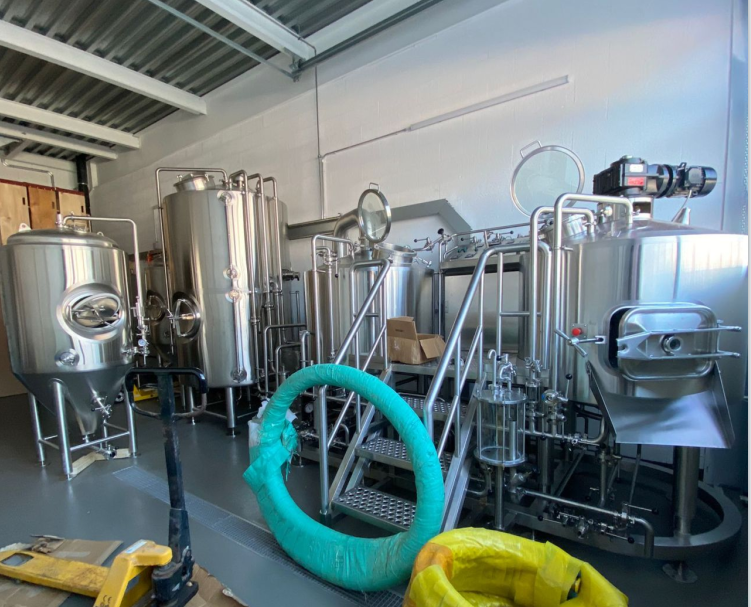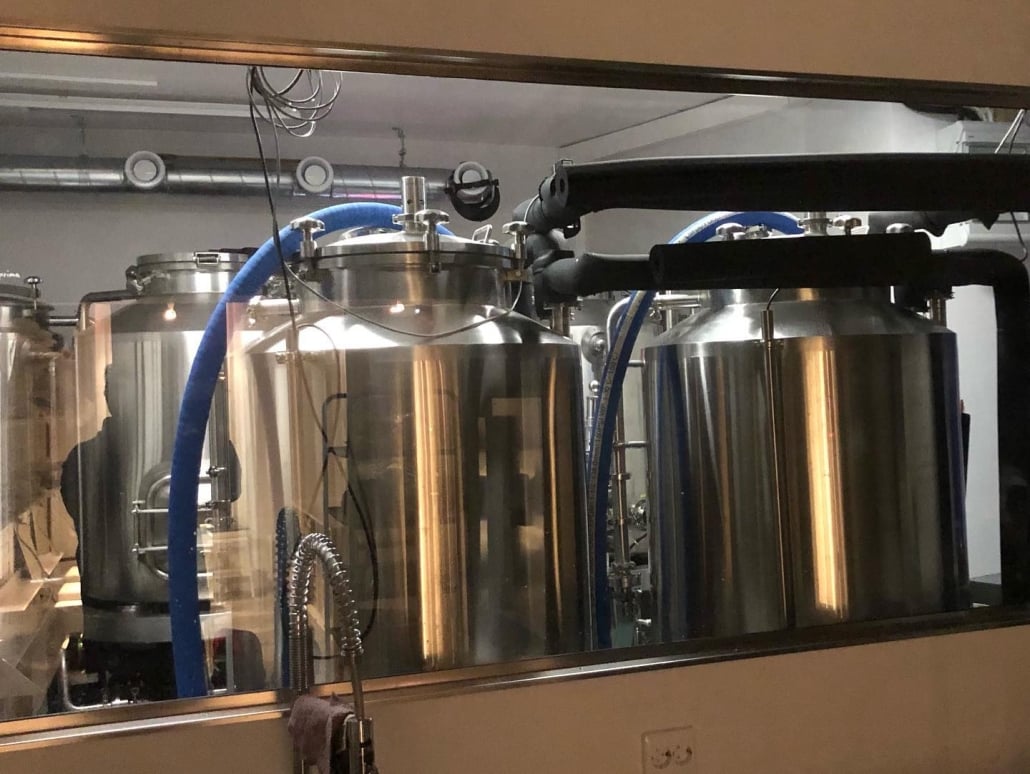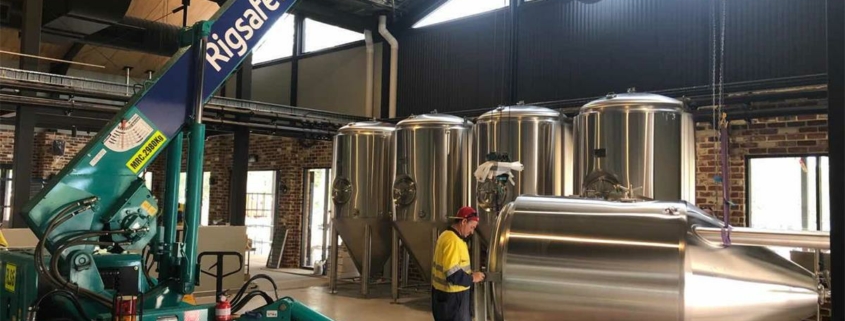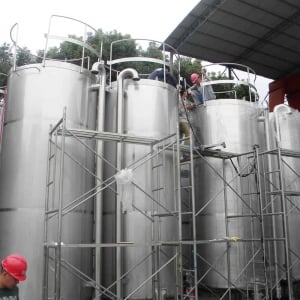Understanding steel fermenter
Steel fermenters are a cornerstone in the world of fermentation, particularly for industries such as brewing, winemaking, and pharmaceuticals. This guide will take you through everything you need to know about steel fermenters, from their benefits and types to the detailed brewing process, and how to choose the right one for your needs.
Overview: What is a Steel Fermenter?
A steel fermenter is a vessel specifically designed for the fermentation process, where microorganisms like yeast convert sugars into alcohol and other byproducts. Made primarily from stainless steel, these fermenters offer durability, corrosion resistance, and ease of cleaning, making them a preferred choice for many commercial and home brewers.
Key Benefits of Steel Fermenters
Steel fermenters come with a host of advantages:
- Durability: Stainless steel is robust and long-lasting.
- Corrosion Resistance: Unlike other materials, stainless steel doesn’t corrode easily, maintaining the purity of your brew.
- Ease of Cleaning: The smooth surface of stainless steel is easy to clean and sanitize.
- Temperature Control: Steel fermenters can be equipped with temperature control systems, crucial for maintaining optimal fermentation conditions.

Guide to Fermentation Equipment
When setting up a fermentation system, especially for brewing, understanding the equipment involved is crucial.
Types of Fermentation Equipment
Here’s a look at the different types of fermentation equipment and their specific uses:
Fermentation Tanks: These are large vessels where the primary fermentation takes place.
Unitanks: These multifunctional tanks can handle both fermentation and conditioning.
Brite Tanks: Used for secondary fermentation, carbonation, and maturation.
Conical Fermenters: These tanks have a conical bottom, allowing for easy removal of yeast and other sediments.
Detailed Equipment Types
| Equipment Type | Description |
|---|---|
| Fermentation Tanks | Large vessels designed for the primary fermentation process. |
| Unitanks | Multifunctional tanks that handle fermentation and conditioning. |
| Brite Tanks | Used for secondary fermentation, carbonation, and maturation. |
| Conical Fermenters | Tanks with a conical bottom for easy yeast and sediment removal. |
The Brewing Process Using Steel Fermenters
Step-by-Step Brewing Process
Brewing with steel fermenters involves several steps, each critical for producing high-quality beer:
- Mashing: Grains are mixed with water and heated to convert starches into fermentable sugars.
- Boiling: The liquid (wort) is boiled and hops are added for bitterness, flavor, and aroma.
- Fermentation: The wort is transferred to a steel fermenter where yeast is added. The yeast ferments the sugars, producing alcohol and carbon dioxide.
- Conditioning: The beer is moved to a brite tank or kept in the same unitank for conditioning, where it matures and carbonates.
- Packaging: The final product is packaged in bottles, cans, or kegs for distribution.
Steel Fermenter Capacity, Design, and Customization
Choosing the right steel fermenter depends on various factors like capacity, design, and the available customization options. Here’s a detailed look:
Steel Fermenter Capacity, Space, and Design
| Parameter | Details |
|---|---|
| Capacity | Ranges from small 5-gallon homebrew systems to 500+ gallon commercial systems. |
| Space Requirements | Depends on the capacity; larger fermenters require more space. |
| Design Features | Includes features like conical bottoms, pressure ratings, and cooling jackets. |
| Customization | Options for ports, fittings, and integrated cooling systems. |
Suppliers and Price Range
When it comes to purchasing a steel fermenter, it’s essential to consider the supplier and price range. Here’s an overview:
| Supplier | Price Range |
|---|---|
| Blichmann Engineering | $800 – $4,000 |
| SS Brewtech | $500 – $3,500 |
| Speidel | $600 – $3,000 |
| Craft Kettle | $1,200 – $6,000 |
| Stout Tanks and Kettles | $900 – $5,000 |
Installation, Operation, and Maintenance
Proper installation, operation, and maintenance are crucial for the optimal performance of your steel fermenter. Here’s what you need to know:
Installation
- Location: Ensure the fermenter is placed in a clean, dry area with adequate ventilation.
- Level Surface: The fermenter should be installed on a level surface to avoid tipping or imbalance.
- Utility Connections: Connect to the necessary utilities like water, electricity, and drainage.
Operation
- Sanitization: Always sanitize the fermenter before use to prevent contamination.
- Temperature Control: Use integrated or external temperature control systems to maintain optimal fermentation temperatures.
- Monitoring: Regularly monitor the fermentation process, checking for signs of infection or off-flavors.
Maintenance
- Regular Cleaning: Clean the fermenter thoroughly after each use.
- Inspection: Periodically inspect the fermenter for signs of wear and tear.
- Repairs: Address any issues promptly to prevent them from worsening.
Choosing the Right Supplier
Selecting the right supplier for your steel fermenter is crucial for ensuring quality and reliability. Here’s a guide to help you make an informed decision:
How to Choose a Supplier
| Criteria | Details |
|---|---|
| Reputation | Check reviews and testimonials from other customers. |
| Quality Assurance | Ensure the supplier offers warranties and quality guarantees. |
| Customer Support | Look for suppliers with strong customer service and technical support. |
| Customization Options | Choose suppliers that offer customization to meet your specific needs. |
| Price vs. Value | Compare prices but also consider the value and features offered. |
Advantages and Limitations of Steel Fermenters
While steel fermenters offer numerous benefits, they also have some limitations. Here’s a detailed comparison:
Advantages and Limitations
| Aspect | Advantages | Limitations |
|---|---|---|
| Durability | Highly durable and long-lasting. | Can be more expensive upfront. |
| Cleaning | Easy to clean and sanitize. | Requires proper maintenance to prevent damage. |
| Corrosion Resistance | Resistant to corrosion and contamination. | May require special cleaners. |
| Temperature Control | Excellent for maintaining stable temperatures. | Complex systems may need expert installation. |

FAQ
Here are some common questions and answers about steel fermenters to help clarify any doubts you may have:
| Question | Answer |
|---|---|
| What is the best material for a fermenter? | Stainless steel is often considered the best due to its durability, corrosion resistance, and ease of cleaning. |
| How do I clean a steel fermenter? | Use a non-abrasive cleaner and follow the manufacturer’s instructions. Regular sanitization is also crucial. |
| Can I use a steel fermenter for home brewing? | Absolutely, steel fermenters are available in various sizes suitable for home brewing. |
| What is the average lifespan of a steel fermenter? | With proper maintenance, a steel fermenter can last for many years, often over a decade. |
| Are steel fermenters worth the investment? | Yes, their durability and performance make them a worthwhile investment for serious brewers. |
Conclusion
Steel fermenters play a vital role in the fermentation process, offering unmatched durability, ease of cleaning, and temperature control. Whether you’re a homebrewer or running a commercial brewery, understanding the different types, features, and maintenance requirements of steel fermenters can help you make the best choice for your brewing needs. By selecting the right supplier and ensuring proper installation and maintenance, you can enjoy the benefits of high-quality fermentation for years to come.

 12HL brewery setup
12HL brewery setup










